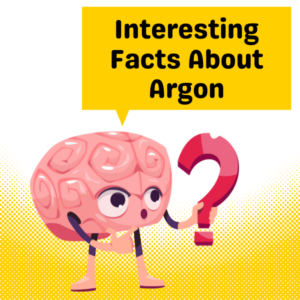Xenon is a fascinating element that holds numerous intriguing properties and characteristics. This article aims to shed light on some interesting facts about xenon, providing a glimpse into its unique nature and applications.
One captivating fact about xenon is its rarity in the Earth’s atmosphere, making up only a minuscule fraction. Despite its scarcity, xenon finds various uses in different fields, including lighting, medical imaging, and space exploration.
Another intriguing fact about xenon is its ability to produce a range of vibrant colors when used in lighting applications. This property, combined with its high efficiency and long lifespan, has made xenon an ideal choice for headlights in luxury cars and high-intensity discharge lamps.
Furthermore, xenon plays a crucial role in medical imaging techniques such as MRI and CT scans. Its unique ability to emit gamma rays when bombarded with electrons enables accurate imaging of internal organs and structures, aiding in the diagnosis and treatment of various medical conditions.
Interesting Facts About Xenon
Xenon is a noble gas that is colorless, odorless, and tasteless.
It is one of the rarest elements on Earth, making up only about 0.0000087% of the atmosphere.
Xenon is used in specialized lighting, such as high-intensity discharge lamps.
These lamps produce a bright, white light and are commonly used in car headlights and movie projectors.
Xenon is also used in medical imaging, specifically in xenon-enhanced computed tomography (CT) scans.
By inhaling a small amount of xenon gas, doctors can obtain detailed images of the lungs and blood flow in the brain.
Xenon is a potent greenhouse gas, but its concentration in the atmosphere is too low to contribute significantly to global warming.
However, it is still important to monitor and control its release into the environment.
Xenon is known for its ability to produce a variety of vibrant colors when used in gas discharge tubes.
These tubes are often used in advertising signs and neon lights.
Xenon is used in ion propulsion systems for spacecraft.
By ionizing xenon gas and accelerating the ions, these systems can provide a small but efficient thrust for long-duration space missions.
Xenon is a popular choice for filling up party balloons.
When released, the gas emits a bright blue glow, creating a visually stunning effect.
Xenon is named after the Greek word “xenos,” which means “stranger” or “foreigner.”
It was given this name because it was initially discovered as an unknown component in the residue left after evaporating components of liquid air.
Xenon is used in certain types of lasers, including excimer lasers.
These lasers emit powerful bursts of ultraviolet light and are used in various applications, such as eye surgery and microchip manufacturing.
Xenon is a potential anesthetic and has been used in some medical procedures.
Its unique properties make it an attractive option for certain surgeries, although its use is still limited.
Xenon is present in trace amounts in the Earth’s crust and is primarily obtained as a byproduct of the production of liquid oxygen and nitrogen.
It is then separated from other gases through a process called fractional distillation.
Xenon has the ability to form compounds, although they are generally unstable and only exist under extreme conditions.
These compounds have been studied for their potential applications in fields such as chemistry and materials science.
Xenon is used in certain types of detectors, such as ionization chambers and proportional counters.
These detectors are used in radiation monitoring and measurement, as xenon can efficiently interact with various types of radiation.
Xenon is a non-toxic gas and is not known to have any harmful effects on human health.
However, like any compressed gas, it should be handled with care to prevent accidents.
Xenon is a stable element and does not undergo radioactive decay.
Its isotopes have various uses, including in scientific research and nuclear medicine.
Xenon has the highest boiling point among all the noble gases.
At -108.1 degrees Celsius, it is the only noble gas that is a liquid at standard temperature and pressure.
Xenon is used in certain types of flash lamps, which are used in photography and various industrial applications.
These lamps produce intense bursts of light and are often used in high-speed photography and laser pumping.
Xenon is a relatively rare element in the universe, but it is believed to be more abundant in certain types of stars.
Its presence in these stars can be detected through spectroscopic analysis.
Xenon has been used in experiments to study the behavior of matter under extreme conditions, such as high pressures and temperatures.
These experiments provide valuable insights into the fundamental properties of materials.
Related: Interesting Facts About Vanadium
Fun Facts About Xenon for Students and Kids’
1. Shining Brightly
Xenon is a gas that can produce a beautiful blue glow when electricity passes through it.
2. Hidden in the Air
Xenon is present in the Earth’s atmosphere, although it is a very rare gas.
3. Silent and Colorless
Xenon is an odorless, tasteless, and colorless gas, making it invisible to our senses.
4. Noble Gas Family
Xenon belongs to the noble gas family, which means it is very stable and does not easily react with other elements.
5. Bright Lights in Space
Xenon is used in spacecraft to power ion thrusters, which help propel the spacecraft through space.
6. Medical Marvel
Xenon has medical applications and can be used as an anesthetic during certain surgical procedures.
7. X Marks the Spot
The name “xenon” comes from the Greek word “xenos,” which means “stranger” or “foreigner.”
8. Neon’s Neighbor
Xenon is found right below neon on the periodic table of elements.
9. Glowing Signs
Xenon is used in some types of high-intensity discharge lamps, which are commonly used in streetlights and car headlights.
10. Rare Gem
Xenon is one of the rarest elements on Earth, making up only a tiny fraction of the atmosphere.
11. Cosmic Detective
Xenon can be used to study the history of the solar system and the formation of planets.
12. Heavyweight Champion
Xenon is a dense gas, heavier than air, which means it can sink to the ground rather than rise up like lighter gases.
Related: Interesting Facts About Platinum
Most Common Uses of Xenon
1. Lighting
Xenon is commonly used in lighting applications, particularly in high-intensity discharge (HID) lamps. These lamps produce a bright and intense light that closely resembles natural daylight.
Xenon HID lamps are often used in automotive headlights, stadium lighting, and underwater lighting due to their high efficiency and long lifespan.
2. Medical Imaging
Xenon gas is used in medical imaging techniques such as xenon computed tomography (XeCT) and xenon magnetic resonance imaging (XeMRI).
These techniques involve inhaling a small amount of xenon gas, which allows for the visualization of blood flow in the brain and other organs. Xenon imaging is particularly useful in diagnosing certain brain disorders and evaluating cerebral blood flow.
3. Ion Propulsion
Xenon is utilized in ion propulsion systems for spacecraft. Ion thrusters use xenon gas as a propellant, which is ionized and accelerated to generate thrust.
This technology is highly efficient and provides a significant amount of thrust compared to traditional chemical propulsion systems. Xenon ion propulsion is commonly used in deep space missions and satellite positioning.
4. Lasers
Xenon is employed in certain types of lasers, such as excimer lasers. Excimer lasers produce short pulses of high-energy ultraviolet light, which are used in various applications including eye surgery (LASIK), semiconductor manufacturing, and scientific research.
Xenon gas acts as a lasing medium in these lasers, contributing to the generation of the desired laser output.
5. Nuclear Energy
Xenon is used in nuclear reactors as a coolant and a neutron absorber. It helps regulate the temperature and prevent overheating in the reactor core. Additionally, xenon-135, a radioactive isotope of xenon, is produced as a byproduct in nuclear reactors and is used for monitoring and controlling the nuclear fission process.
6. Scintillation Detectors
Xenon is utilized in scintillation detectors, which are devices used to detect and measure ionizing radiation. Xenon gas is mixed with a scintillating material that emits light when struck by radiation. This light is then converted into an electrical signal for analysis. Scintillation detectors are commonly used in medical imaging, environmental monitoring, and radiation detection in nuclear facilities.
7. Research and Development
Xenon is widely used in various research and development applications. Its unique properties, such as its high density and low reactivity, make it suitable for experiments in fields like physics, chemistry, and materials science. Xenon is often used as a calibration standard in spectroscopy, as a contrast agent in nuclear magnetic resonance (NMR) imaging, and as a cryogenic refrigerant in certain scientific experiments.
Chemistry of Xenon
Discovery
Xenon, a noble gas, was discovered by the Scottish chemist Sir William Ramsay and his assistant Morris Travers in 1898. They were conducting experiments on the residue left behind after evaporating components of liquid air.
Through their experiments, they were able to isolate a new gas that had not been previously identified. This gas was later named xenon, derived from the Greek word “xenos” meaning “stranger” or “foreigner.”
History
Xenon’s discovery marked a significant milestone in the field of chemistry. It was the first noble gas to be discovered after helium, neon, and argon.
Ramsay and Travers’ discovery of xenon expanded our understanding of the periodic table and the existence of noble gases. It also paved the way for further research into the unique properties and applications of xenon.
Basic Chemistry
Xenon is a colorless, odorless, and tasteless gas that belongs to the noble gas group on the periodic table. It is a non-reactive element, meaning it does not readily form compounds with other elements.
Xenon has an atomic number of 54 and an atomic weight of 131.29. Its electron configuration is [Kr] 5s^2 4d^10 5p^6, with a full outer electron shell, making it stable and unreactive.
Chemical Properties
Although xenon is generally unreactive, it can form compounds under certain conditions. It can react with highly electronegative elements, such as fluorine, to form xenon hexafluoride (XeF6) or xenon tetrafluoride (XeF4).
These compounds are powerful oxidizing agents and can react with various organic and inorganic substances. Xenon can also form compounds with oxygen, such as xenon trioxide (XeO3), which is a strong oxidizing agent.
Applications
Xenon has several important applications in various fields. One of its most well-known uses is in lighting, where xenon gas is used in high-intensity discharge lamps.
These lamps produce a bright, white light and are commonly used in automotive headlights and movie projectors. Xenon is also used in medical imaging, particularly in xenon magnetic resonance imaging (MRI) and xenon computed tomography (CT) scans.
Additionally, xenon is utilized in the production of lasers, as a propellant in ion thrusters for spacecraft, and as a component in certain anesthesia mixtures.
Interesting Physical Properties of Xenon
1. Colorless and Odorless Gas
Xenon is a colorless and odorless gas at standard temperature and pressure. It belongs to the noble gas group on the periodic table, which means it is highly unreactive and does not readily form compounds with other elements.
This property makes xenon useful in various applications, such as in lighting and as an anesthetic.
2. High Density
Xenon has a high density compared to other gases, approximately 4.5 times denser than air. This property allows xenon to be used in certain applications where its high density is advantageous, such as in specialized lighting systems and in nuclear reactors as a coolant.
3. Low Boiling and Melting Points
Xenon has a relatively low boiling point of -108.1°C (-162.6°F) and a melting point of -111.9°C (-169.4°F). These low temperatures make xenon easily liquefiable and solidifiable, allowing it to be used in cryogenic applications and as a refrigerant in certain cooling systems.
4. Nonflammable
Xenon is a nonflammable gas, meaning it does not support combustion. This property makes it a safe choice for various applications, including in lighting fixtures and in the aerospace industry, where nonflammable materials are crucial for safety.
5. High Thermal Conductivity
Xenon exhibits high thermal conductivity, which means it can efficiently transfer heat. This property makes xenon useful in certain specialized applications, such as in high-performance heat transfer systems and in certain types of lasers.


